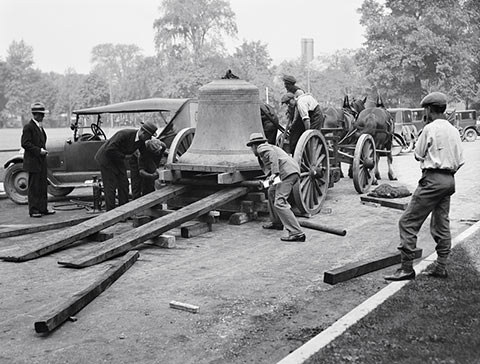On a warm September day, U of T workers unpacked a 2.5-tonne bronze bell, tuned to a low C note. They hoisted the behemoth to the top of Soldiers’ Tower, hanging it from steel girders among 22 other different-sized bells to assemble the university’s original carillon.
The project to commemorate the fallen of the First World War had quickly struck a chord with U of T alumni. Fundraising began in January 1927, when Board of Governors Chair H. Maurice Cody donated $125 to fund the smallest bell. More donations poured in, with many grads contributing $5 apiece – the Victoria College Alumni Association collectively donated $5,800 for the pictured bell, the second-largest.
The Gillett and Johnson foundry in England had shipped all 23 bells in August, and the dedication concert took place on October 6. Parliament Hill’s official carillonneur, Percival Price (BMus 1928), played the hymn “Old Hundred” to live and radio audiences on the carillon’s clavier, then rang the largest bell 100 times to acknowledge U of T’s centenary. (In 1952, 19 more bells were added to honour the fallen from the Second World War. Another revamp of the carillon took place in 1976.)
Ever since, students have been fascinated by the music that wafts from the tower top. “The carillon’s purpose is to contribute to the soundscape of the community,” says Roy Lee (JD 2004), the current carillonneur. “Our performances throughout the year are how we fulfil the wishes of the original donors: that the carillon be ‘for all time an audible and daily reminder’ of the sacrifices of the university community during the Great War.”
Watch: Roy Lee playing the Soldiers’ Tower carillon





